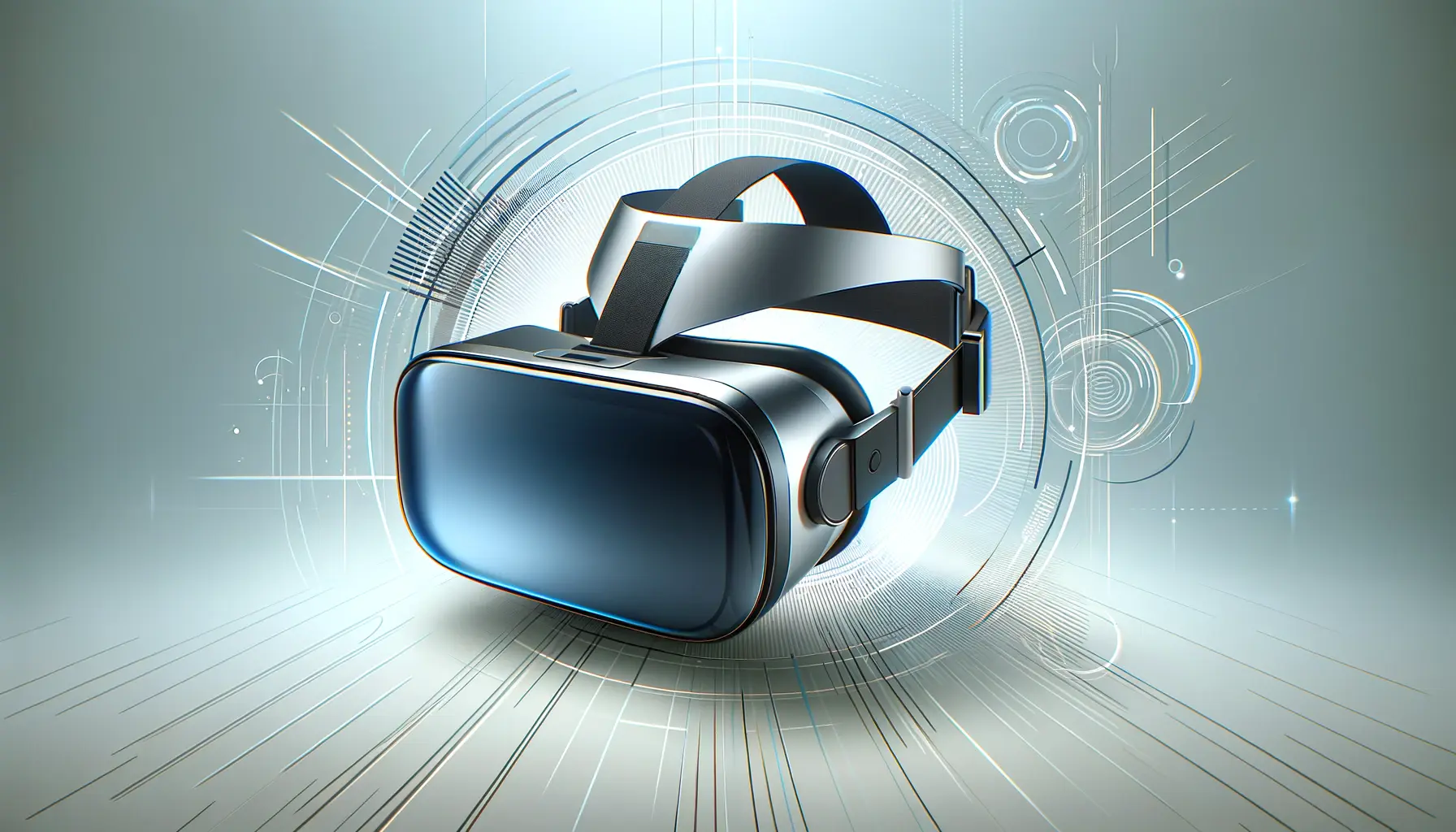The digital marketing landscape is continuously evolving, with SEO (Search Engine Optimization) at its core.
Among the myriad of strategies employed to enhance website visibility and search engine ranking, headless technology has emerged as a game-changer, particularly in the realm of SEO backlinking.
This innovative approach decouples the frontend presentation layer of a website from the backend data management system, offering unparalleled flexibility and efficiency in content delivery and site management.
Headless technology, by its very nature, is revolutionizing how marketers and developers think about building and optimizing websites for search engines.
The separation of the frontend and backend allows for more agile content updates, faster website performance, and ultimately, a more potent SEO strategy.
In this article, we delve into the intricacies of headless tech and its implications for SEO backlinking, providing insights into why it’s becoming an essential tool in the digital marketer’s arsenal.
- Understanding Headless Technology
- Implementing Headless for Enhanced SEO Backlinking
- Content Strategy and Headless CMS
- Technical SEO and Headless Architecture
- Link Building with Headless CMS
- Measuring SEO Success with Headless CMS
- Future Trends in Headless SEO
- Embracing the Future of SEO with Headless Technology
- Headless Tech in SEO Backlinking FAQs
Understanding Headless Technology
What is Headless Technology?
At its core, headless technology refers to a web development architecture where the frontend (the head) is separated from the backend (the body).
This separation is facilitated through the use of APIs (Application Programming Interfaces), which allow the two parts to communicate and function independently.
The headless CMS (Content Management System) is a prime example of this technology, where content stored in the backend can be delivered to any frontend framework, be it a website, mobile app, or IoT device, without the need for a traditional, monolithic CMS interface.
The flexibility offered by headless technology enables developers to use their preferred tools and frameworks to create a more customized and optimized user experience.
For marketers, this means the ability to update content more swiftly and efficiently, without needing to overhaul the entire site or app.
This agility is particularly beneficial for SEO, as fresh, relevant content is a key driver of search engine rankings.
Benefits of Headless for SEO
Headless technology brings several advantages to the table when it comes to SEO.
First and foremost, it can significantly improve website loading times.
Since the frontend is developed independently, it can be optimized for speed, directly influencing SEO rankings as search engines favor fast-loading sites.
Additionally, headless CMSs often provide better control over SEO elements like meta tags, structured data, and URL structures, allowing for more precise SEO optimization.
Another key benefit is the ease of content distribution across multiple platforms.
With headless technology, the same content can be seamlessly published to a website, mobile app, social media platforms, and more, increasing the content’s reach and potential backlink sources.
This omnichannel approach not only enhances user engagement but also opens up new avenues for generating high-quality backlinks, a critical factor in SEO success.
Headless technology offers unparalleled flexibility in web development and content management, significantly impacting SEO strategies, especially in the realm of backlinking.
Implementing Headless for Enhanced SEO Backlinking
Adopting headless technology can significantly enhance your SEO backlinking strategy.
The process involves several key steps, each designed to leverage the strengths of headless architecture for improving your site’s visibility and search engine ranking.
Here’s how to implement headless technology effectively:
First, understanding the workflow between the headless CMS and the frontend is crucial.
This knowledge enables you to optimize content dynamically, ensuring that it’s not only user-friendly but also SEO-optimized across all platforms.
Let’s delve into the specifics:
Optimizing Site Speed
- Choose the Right Framework: Opt for lightweight, SEO-friendly frontend frameworks like React or Vue.js to build fast-loading pages.
- Implement Lazy Loading: Use lazy loading for images and videos to improve page load times, significantly affecting SEO rankings.
Enhancing Content Delivery
- API-First Approach: Utilize the headless CMS’s API to deliver content efficiently across multiple channels, ensuring consistent and up-to-date information everywhere.
- Content Repurposing: Leverage the same piece of content across different platforms (website, mobile apps, social media) to maximize reach and backlink potential.
SEO Optimization Techniques
- Structured Data Implementation: Use schema markup to help search engines understand the content better, improving visibility in search results.
- Customizable URL Structures: Take advantage of the headless CMS’s flexibility to create SEO-friendly URLs, enhancing site structure and crawlability.
By focusing on these areas, businesses can create a robust SEO backlinking strategy that leverages the full potential of headless technology.
The goal is to make your content more accessible and engaging across various platforms, thereby increasing the likelihood of earning high-quality backlinks.
Incorporating headless technology into your SEO strategy requires a comprehensive understanding of both the technical and content-related aspects of your website. By optimizing for speed, enhancing content delivery, and employing advanced SEO techniques, you can significantly improve your site’s backlink profile and search engine ranking.
Content Strategy and Headless CMS
At the heart of any successful SEO campaign is a solid content strategy.
With headless technology, the approach to content creation and distribution undergoes a transformative shift, offering new opportunities for engagement and backlinking.
A well-structured content strategy that leverages the advantages of a headless CMS can significantly impact your SEO efforts.
Understanding the synergy between content strategy and headless CMS is crucial.
Here’s how to align your content strategy with headless technology for optimal SEO benefits:
Creating SEO-Focused Content
- Keyword Research: Begin with comprehensive keyword research to identify terms and phrases your target audience is searching for. This will guide the content creation process.
- Content Types: Develop a variety of content types (blog posts, articles, infographics, videos) that cater to different stages of the customer journey, increasing the potential for backlinks.
Dynamic Content Personalization
- User Behavior Analysis: Utilize analytics to understand user behavior and preferences, allowing for dynamic content personalization that resonates with different audience segments.
- Automated Content Updates: Use the headless CMS to automate content updates across all platforms, ensuring that your audience always has access to the latest information.
Multi-Platform Content Distribution
- Omnichannel Approach: Distribute content seamlessly across multiple channels (websites, apps, social media) to maximize reach and engagement, thereby increasing the likelihood of generating backlinks.
- Consistency and Quality: Maintain a consistent tone and high quality across all content pieces, reinforcing your brand’s authority and trustworthiness, which are crucial for backlink acquisition.
By integrating a headless CMS into your content strategy, you can not only streamline content management and distribution but also significantly enhance your SEO performance.
The flexibility and efficiency provided by headless technology allow for a more targeted and personalized content approach, driving engagement, and encouraging the creation of quality backlinks.
A strategic approach to content, powered by headless technology, can elevate your SEO backlinking efforts, making your content more discoverable, shareable, and link-worthy.
Technical SEO and Headless Architecture
Technical SEO is a cornerstone of any effective SEO strategy, focusing on optimizing website infrastructure to facilitate search engine crawling and indexing.
Headless architecture introduces a paradigm shift in how technical SEO can be implemented, offering unique advantages and challenges.
Understanding how to leverage headless architecture for technical SEO is crucial for maximizing its benefits.
Let’s explore the key components of technical SEO in a headless environment and how to optimize them:
Site Speed Optimization
- Server Response Time: Optimize backend server configurations to reduce response times, significantly impacting overall site speed and user experience.
- Frontend Performance: Utilize modern frontend technologies and optimization techniques, such as code splitting and asset minification, to enhance page load speeds.
Enhanced Crawl Efficiency
- Robots.txt Optimization: Carefully configure the robots.txt file to guide search engine bots towards important pages and prevent them from accessing irrelevant sections.
- XML Sitemaps: Generate comprehensive XML sitemaps that accurately reflect the site’s structure, facilitating efficient crawling and indexing of content.
Mobile Optimization
- Responsive Design: Ensure that the frontend framework delivers a responsive, mobile-friendly user experience, crucial for mobile SEO and user satisfaction.
- Accelerated Mobile Pages (AMP): Consider implementing AMP for critical content pages to improve loading times on mobile devices, although this is less of a necessity with modern, lightweight frameworks.
Technical SEO in a headless setup requires a proactive and collaborative approach between developers and SEO specialists.
By focusing on these key areas, businesses can ensure that their headless websites are not only fast and user-friendly but also fully optimized for search engine visibility.
The flexibility of headless architecture allows for innovative SEO solutions that can significantly improve search rankings and drive organic traffic.
Headless architecture offers unparalleled opportunities for technical SEO optimization, enabling businesses to build highly efficient, search engine-friendly websites that stand out in the digital landscape.
Link Building with Headless CMS
Link building remains one of the most challenging aspects of SEO, requiring creativity, persistence, and strategic planning.
The adoption of headless CMS technology can offer new avenues for link building, thanks to its flexibility and the ability to push content across multiple platforms seamlessly.
Understanding how to leverage headless CMS for link building can give you a competitive edge in your SEO efforts.
Here’s how you can utilize headless CMS to enhance your link-building strategy:
Content Syndication
- Wider Distribution: Use the headless CMS to syndicate your content across various platforms, increasing its visibility and the potential for backlinks from diverse sources.
- Partnerships and Collaborations: Establish partnerships with other websites and platforms to share and feature your content, leveraging the headless CMS’s ease of content distribution.
Guest Posting Opportunities
- Streamlined Content Creation: Utilize the headless CMS to efficiently create and manage guest posts for other sites, tailoring content to meet the specific requirements of each platform.
- Tracking and Analytics: Monitor the performance of your guest posts across platforms through the headless CMS, allowing for data-driven adjustments to your strategy.
Resourceful Content Creation
- Infographics and Visual Content: Leverage the headless CMS to produce and distribute engaging visual content, such as infographics, which are highly shareable and can attract backlinks.
- Comprehensive Guides and Ebooks: Create in-depth guides and ebooks that serve as valuable resources, encouraging other sites to link to your content as a reference.
By taking advantage of the headless CMS’s capabilities for content management and distribution, you can implement a more dynamic and effective link-building strategy.
The key is to produce high-quality, valuable content that appeals to your target audience and relevant platforms, thereby naturally attracting backlinks.
With headless technology, the process of content creation, management, and syndication becomes more streamlined and efficient, opening up new possibilities for building a strong backlink profile.
Headless CMS not only simplifies content management across platforms but also provides innovative opportunities for link building, essential for boosting SEO performance and online visibility.
Measuring SEO Success with Headless CMS
Measuring and analyzing SEO performance is critical to understanding the effectiveness of your strategies and making informed decisions for future optimizations.
With the adoption of headless CMS, the approach to tracking SEO metrics and KPIs (Key Performance Indicators) may require adjustments to accommodate the unique architecture and distribution channels.
However, the flexibility and data-centric nature of headless CMS can also provide deeper insights into your SEO efforts.
Here’s how to effectively measure SEO success in a headless CMS environment:
Integrated Analytics and Tracking
- Custom Analytics Implementation: Utilize the headless CMS API to integrate with analytics platforms like Google Analytics, allowing for comprehensive tracking of user behavior and traffic sources across all frontend instances.
- User Engagement Metrics: Monitor key engagement metrics such as page views, bounce rates, and average session duration to gauge content effectiveness and user satisfaction.
SEO Performance Metrics
- Organic Search Traffic: Track the volume of traffic coming from organic search results to assess the visibility and ranking of your content in search engines.
- Keyword Rankings: Monitor the rankings for targeted keywords to evaluate the effectiveness of your content and SEO optimizations in improving search visibility.
Backlink Profile Analysis
- Backlink Quantity and Quality: Use SEO tools to analyze the number and quality of backlinks pointing to your content, which are critical factors in search engine rankings.
- Referral Traffic: Assess the volume of traffic coming from external links to understand the impact of your link-building efforts on driving visitors to your site.
By leveraging the capabilities of headless CMS and integrating with robust analytics tools, businesses can gain a comprehensive view of their SEO performance across all digital touchpoints.
This data-driven approach enables continuous optimization of content and SEO strategies, ensuring that your efforts are aligned with your business objectives and target audience needs.
With the right tools and processes in place, measuring SEO success in a headless environment becomes a powerful asset in your digital marketing arsenal.
Effective measurement and analysis of SEO metrics are essential for optimizing your headless CMS-driven website, enabling you to refine strategies and achieve better search engine rankings and user engagement.
Future Trends in Headless SEO
The digital landscape is ever-evolving, with new technologies and trends constantly emerging.
Headless CMS and SEO are no exception, and staying ahead of the curve is crucial for maintaining a competitive edge.
As we look to the future, several trends are poised to shape the intersection of headless technology and SEO, offering exciting opportunities for innovation and growth.
Understanding these trends will help you prepare and adapt your strategies to leverage the full potential of headless SEO:
AI and Machine Learning Integration
- Automated Content Optimization: AI and machine learning algorithms can analyze user behavior and search patterns to automatically optimize content for SEO, making headless CMS even more dynamic and responsive.
- Personalization at Scale: These technologies enable hyper-personalized content experiences across platforms, improving user engagement and SEO through more relevant and targeted content.
Voice Search and IoT
- Expanding Content Reach: With the rise of voice search and IoT devices, headless CMS allows for seamless content delivery to new interfaces, requiring SEO strategies to evolve to include voice search optimization and content structuring for IoT contexts.
- Conversational Content: The growth of voice search will emphasize the need for more natural, conversational content, influencing how content is created and optimized in headless CMS environments.
Enhanced User Experience Through AR/VR
- Immersive Content Experiences: Augmented Reality (AR) and Virtual Reality (VR) offer new ways to engage users, and headless CMS can serve as the backbone for delivering immersive content that also needs to be SEO-friendly.
- SEO for Immersive Content: As AR and VR content becomes more prevalent, SEO strategies will need to adapt to ensure this content is discoverable and ranks well in search engines.
As we navigate the future of headless SEO, the key will be to remain agile and open to experimentation.
The integration of AI, the expansion into voice search and IoT, and the exploration of AR/VR for content delivery are just a few areas where headless technology can drive significant advancements in SEO.
By staying informed and ready to adapt, businesses can harness these trends to enhance their online presence, engage users more effectively, and achieve greater SEO success.
The future of headless SEO is bright, with emerging technologies and trends offering new opportunities for innovation. Staying ahead of these developments will be crucial for leveraging headless CMS to its full potential, driving SEO performance and delivering exceptional user experiences.
Embracing the Future of SEO with Headless Technology
The journey through the realms of headless technology and SEO backlinking unveils a landscape brimming with potential for innovation, efficiency, and strategic advantage.
As we’ve explored, the decoupling of the frontend presentation from the backend logic through headless CMS platforms not only streamlines content management across multiple channels but also significantly enhances SEO efforts.
The agility and flexibility afforded by headless architecture empower businesses to adapt quickly to changing SEO landscapes, ensuring their content remains relevant, engaging, and, most importantly, discoverable.
Key Takeaways for Maximizing SEO with Headless Tech
- Optimized Performance: Faster website speeds and improved user experiences directly contribute to higher search engine rankings.
- Dynamic Content Strategy: The ability to push content seamlessly across various platforms amplifies reach and potential for quality backlinks.
- Technical SEO Mastery: Leveraging headless architecture for technical SEO optimizations ensures that websites are built on a solid foundation, ready to be crawled and indexed effectively by search engines.
- Innovative Link Building: Headless CMS opens new avenues for creative link-building strategies, enhancing the site’s authority and SEO value.
- Analytics and Measurement: Integrated analytics in a headless setup provide granular insights into SEO performance, enabling data-driven optimizations.
As we look to the horizon, the integration of AI, voice search optimization, and immersive technologies like AR/VR with headless CMS heralds a new era of SEO.
These advancements promise not only to redefine how content is created and delivered but also how it is optimized for search engines.
Businesses that embrace these trends, adapting their strategies to leverage the full capabilities of headless technology, will find themselves at the forefront of digital innovation, capturing the attention of both search engines and users alike.
Charting the Path Forward
The evolution of headless tech in SEO backlinking is a testament to the ever-changing nature of the digital world.
As businesses and marketers, the onus is on us to remain agile, continuously exploring new technologies and methodologies to enhance our SEO strategies.
The headless CMS is not merely a tool but a gateway to unlocking unprecedented levels of engagement, visibility, and success in the digital realm.
By harnessing its power, we can ensure that our content not only reaches but resonates with our target audience, driving meaningful interactions and fostering growth.
In conclusion, the fusion of headless technology and SEO represents a pivotal shift in how we approach digital marketing and content strategy.
With its myriad benefits and the promise of future innovations, headless tech is poised to play a central role in shaping the SEO strategies of tomorrow.
As we navigate this exciting landscape, let us embrace the opportunities it presents, crafting experiences that delight users and elevate our presence in the digital ecosystem.
Want your website to top Google search rankings? Leave the SEO to our professional agency!
Headless Tech in SEO Backlinking FAQs
Explore common queries about leveraging headless technology for enhancing your SEO backlinking strategy.
Headless technology in SEO refers to the separation of a website’s frontend presentation from its backend data management, enhancing content flexibility and site performance.
Headless tech improves SEO by enabling faster site speeds, more efficient content updates, and better control over SEO elements like meta tags and structured data.
Yes, a headless CMS can support SEO backlinking by facilitating content distribution across multiple platforms, increasing visibility and backlink opportunities.
Yes, headless SEO differs by focusing on API-driven content delivery, requiring a more technical approach to optimize for search engines effectively.
The main challenges include ensuring crawlability, implementing structured data, and managing SEO elements without traditional CMS plugins.
Measure SEO success by integrating analytics to track user engagement, organic traffic, keyword rankings, and backlink quality across all content channels.
Future trends include AI for automated optimization, voice search adaptation, and immersive content experiences through AR/VR technologies.
Yes, headless technology enhances mobile SEO by allowing for the development of fast, responsive websites optimized for mobile users and search engines.










